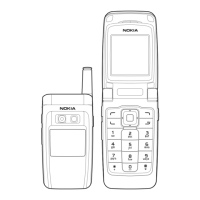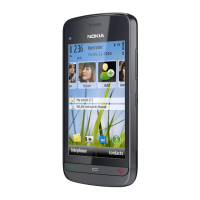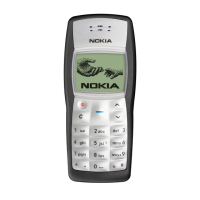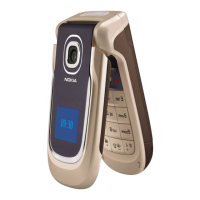10 ã2000 Nokia Mobile Phones. All Rights Reserved.
2. Descriptions of AT Commands
2.1. Call Control
ATA Answer Command
This command answers an incoming call. The call is indicated by the
RING or +CRING message on the terminal equipment or by the
number 2 if numeric mode has been selected.
Syntax:
ATA Answer incoming call.
ATD Dial Command
This command initiates a call. When a call is initiated, the command
must contain the called party's number or a directory entry which
contains the stored number. The ATD command can also be used for
sending DTMF tones and for switching call mode from voice to data
when an alternating call is active. When the data adapter tries to
reach a number and fails to establish a connection, further attempts
will be delayed, i.e. successive attempts to dial the same number
will be rejected for a short period of time, and the response DE-
LAYED will be displayed. The delay period only lasts for a few sec-
onds initially; however,
if you continue to try to get the call through and fail, the delay will
be prolonged for a few minutes. Finally, the called number will be
included on a list of so-called blacklisted numbers. The response
BLACKLISTED will be seen on the screen. The data adapter will not
accept any new attempts to that number before you press any key
on the phone keypad. This user action erases the number from the
list and enables you to call the number again. The purpose of black-
listing numbers is to conserve the network's resourc-
es.
Syntax:
A semicolon character needs to be added when a voice call is orig-
inated.
ATD[<dial_string>[;]] Dials the number in a dial-string.

